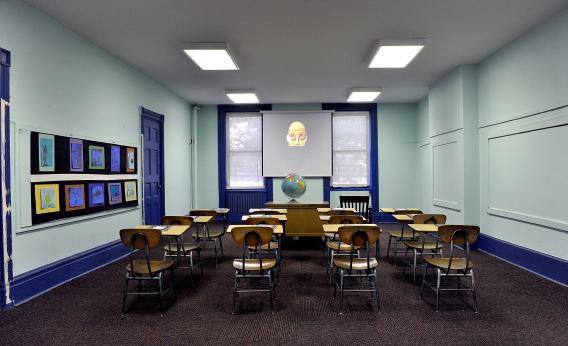Will Oremus asks whether it is “a good thing” that, for the first time since the 1920s, American cities are now growing faster than suburbs.
When it comes to educational equity, the answer is yes.
The white flight of the mid-20th century was motivated, in part, by the desire of middle-class white parents to segregate their children in suburban, predominantly white schools. Tiny suburban towns often maintained their own independent school districts, and in many regions of the country, actively resisted cooperation with schools in nearby cities or even more diverse suburbs. The result has been the steady racial and socioeconomic resegregation of American public education, particularly in the North, where segregation was de facto, not de jure, and federal Courts declined to intervene.
We know school segregation is a major social crisis because—despite the good performance of some high-poverty schools—poor children tend to have better academic outcomes when they attend school alongside middle class students.There is also some evidence that highly effective teachers prefer working in integrated schools.And it is my own strongly held belief that all children benefit from exposure to other children whose backgrounds are different from their own.
With more middle and upper-income young families now showing a predilection for urban living, city school districts have a wonderful opportunity to create more integrated schools. There are several ways they can do this:
1. By purposefully drawing school enrollment boundaries to encompass both high-income and low-income housing stock. My small Brooklyn neighborhood of Cobble Hill/Boerum Hill contains multimillion dollar, single-family brownstones, as well as a large housing project. Yet only one of the local elementary schools is truly diverse while the other two—both in easy walking distance—are segregated.
2. By asking charter schools to embrace diversity as part of their mission statements, and recruit students from across all races and classes, instead of focusing solely on poor children.
3. By creating magnet schools that draw students from across the city, and that do not require high test scores for enrollment. (Chris Hayes’ new book, Twilight of the Elites, is eloquent on the problem of frantic, expensive test-prep contributing to urban school segregation.)
4. And by attacking residential segregation head-on, in part through the sort of housing policies that Slate’s Matt Yglesias proposes in his book, The Rent is Too Damn High.
Sadly, no American governor or big city mayor I know of has committed to school integration as a central, clearly articulated facet of his or her education reform agenda. In part, this is because so many middle and upper class parents still feel skittish about sending their children to school with poor kids, and so “school choice” policies have evolved, in many cities, as a way to de facto segregate the children of the creative class. If we continue down this road, we simply won’t be taking advantage of the social, civic, and academic upsides of our rapidly diversifying cities. That would be a national shame.
